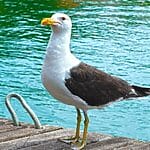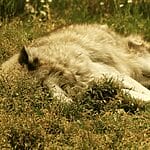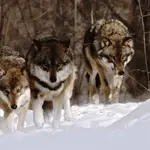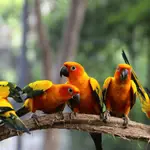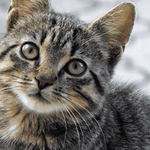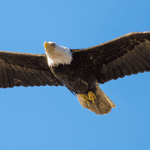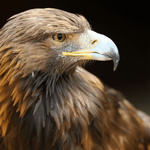Discover the secret lives of nocturnal birds and their extraordinary adaptations for life after dark. From silent owls to singing nightingales, these avian wonders face unique challenges in a world that doesn’t sleep. Dive into their moonlit world and learn how conservation efforts are key to their survival.
Key Takeaways:
- Owls are highly adapted nocturnal predators with silent flight, exceptional hearing, and binocular vision, playing a vital role in ecosystems as natural pest controllers. They are revered in human culture but face threats from habitat destruction.
- Nightjars, masters of camouflage and silent flight, are nocturnal insectivores with a global presence. Their survival is challenged by habitat destruction and light pollution, highlighting the need for dark sky initiatives and conservation efforts.
- Night herons, including the Black-crowned and Yellow-crowned species, are stealthy nocturnal fishermen with a preference for wetland habitats. Their existence is threatened by wetland degradation, necessitating the protection of aquatic ecosystems.
- The Killdeer, a member of the plover family, is a versatile nocturnal forager known for its “kill-deer” call and protective feigning of injury near nests. Habitat encroachment poses a threat to their survival, underscoring the importance of conservation efforts.
- The Northern Mockingbird is a nocturnal songbird that thrives in urban and suburban areas, relying on green spaces for habitat. Urban expansion challenges their survival, emphasizing the need for native plant cultivation and reduced pesticide use to support urban biodiversity.
The World of Birds That Fly at Night
Owls, nightjars, night herons, killdeer, mockingbirds, petrels, tawny frogmouths, woodcocks, nightingales, barn owls, flycatchers, warblers, kakapos, corncrakes, and little penguins are birds that fly at night.
| Bird Type | Adaptations for Nocturnal Life | Dietary Habits | Conservation Concerns | Conservation Efforts |
| Owls | Silent flight, exceptional hearing, binocular vision | Small mammals, insects, other birds | Habitat destruction, human encroachment | Habitat preservation, support for owl conservation organizations |
| Nightjars | Masters of camouflage, silent flight | Insects | Habitat destruction, light pollution | Dark sky initiatives, conservation programs |
| Night Herons | Stealthy fishing techniques, preference for wetland habitats | Fish, amphibians, insects | Wetland degradation | Protection of aquatic ecosystems |
| Killdeer | “Kill-deer” call, feigning of injury near nests | Insects, worms, small invertebrates | Habitat encroachment | Conservation of natural habitats |
| Northern Mockingbird | Thrives in urban areas, relies on green spaces | Insects, berries | Urban expansion | Cultivation of native plants, reduced pesticide use |
| Petrels | Exceptional sense of smell, low-light vision | Squid, fish oils | Climate change, ocean pollution | Marine habitat conservation, international cooperation |
| Tawny Frogmouth | Camouflage, nocturnal hunting | Insects, small animals | Deforestation, urban expansion | Bushland and woodland habitat protection |
| American Woodcock (“Timberdoodle”) | “Sky dance” courtship display, diet of earthworms | Earthworms, invertebrates | Habitat loss | Creation and maintenance of early successional habitats |
| Nightingale | Complex, powerful melody, dense scrubby habitat preference | Insects | Urbanization, agricultural intensification | Protecting and restoring dense, thorny undergrowth habitats |
| Barn Owl | Silent flight, heart-shaped face for low-light hunting | Rodents, small mammals | Farming practices, loss of nesting sites | Installing barn owl boxes, habitat restoration |
| Alder Flycatcher | Nocturnal migration, brushy areas near water | Insects | Disorienting city lights, weather patterns | Conservation of stopover sites, habitat protection |
| Yellow Warbler | Wetlands and gardens habitat, sweet song | Insects like caterpillars, midges | Habitat loss, climate change | Protecting and restoring wetland habitats, planting native vegetation |
| Kakapo | World’s only flightless parrot, nocturnal ground-dwelling | Native plants, seeds, fruits | Predation by introduced species, habitat loss | Intensive breeding program, relocation to predator-free islands |
| Corncrake | Ground-nesting in tall grasses, distinctive call | Invertebrates | Modern agriculture, mowing practices | Delaying mowing dates, traditional hay-making practices |
| Little Penguin (“Fairy Penguin”) | Nocturnal coastal forager, tight-knit colonies | Fish, squid | Predators like foxes, coastal development | Predator control programs, establishment of marine reserves |
1. Owls: Masters of the Night Sky
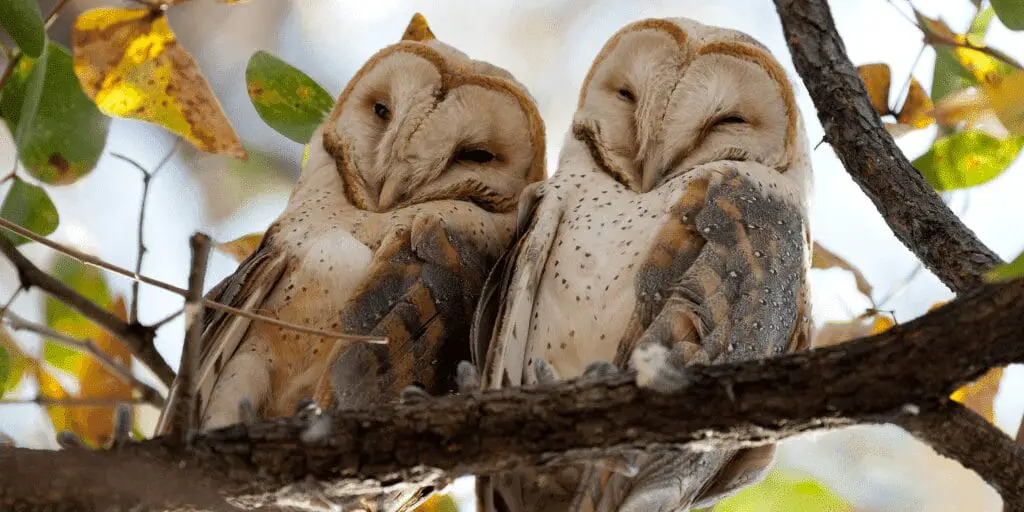
When the sun sets and darkness blankets the sky, a group of feathered predators emerges as the true sovereigns of the night. Owls, with their enigmatic presence, have evolved to dominate the nocturnal hours.
Their anatomical and physiological adaptations are nothing short of remarkable. Imagine being able to glide through the air in near silence; this is possible for owls thanks to their specialized flight feathers that muffle their movements, allowing them to approach prey undetected.
Their heads can swivel up to 270 degrees, an adaptation that compensates for their fixed eye sockets, while their binocular vision enables them to pinpoint prey with deadly accuracy.
The owl family is diverse, ranging from the imposing Snowy Owl, which reigns over the icy tundra, to the elusive Barn Owl, a ghostly figure in the moonlit countryside.
These birds have conquered habitats across continents, from dense forests to open grasslands. Their diet is as varied as their homes, consisting of small mammals, insects, and other birds, which they hunt with precision.
The haunting calls of owls, each species with its distinct sound, resonate through the night, serving as communication and territorial markers.
Owls hold a special place in human culture, often symbolizing wisdom and mystery. Their silent flight and nocturnal habits have inspired countless myths and legends. However, as awe-inspiring as these creatures are, they face threats from habitat destruction and human encroachment.
It’s crucial to advocate for owl conservation, supporting the preservation of their natural environments and the organizations tirelessly working to protect these majestic birds.
Great Horned Owl
The Great Horned Owl is a formidable figure in the avian world, with its piercing eyes and the iconic feather tufts that stand tall like horns. Its deep, resonating call is a defining sound of the wilderness, echoing through the night.
This owl’s habitat range is impressively vast, encompassing forests, deserts, and even urban settings across North America. Its diet reflects its adaptability as a predator, feasting on a smorgasbord of prey from rodents to other birds.
The Great Horned Owl plays a critical role in maintaining the balance of local ecosystems, acting as a natural pest control by keeping rodent and small mammal populations in check. Despite its prowess, this species is not immune to the challenges of the modern world, such as habitat loss and the dangers of vehicles.
To aid in the conservation of these majestic birds, individuals can participate in initiatives that protect their habitats and ensure safer environments for them to thrive.
Barn Owl
The Barn Owl, with its heart-shaped face and ethereal presence, is a nocturnal enigma. It boasts one of the broadest distributions among owls, calling a variety of open landscapes home, from farmlands to marshes. Its hunting abilities are extraordinary, utilizing unmatched low-light vision and hearing to detect even the slightest movements of rodents and other small mammals.
Barn Owls often choose to nest in human-made structures like barns or natural cavities, a testament to their adaptability. Their role in folklore is significant, with their eerie calls and ghostly flight inspiring tales and superstitions.
Conservation efforts for Barn Owls include nest box programs and habitat restoration, which are vital for their continued survival. By fostering owl-friendly environments, communities can contribute to the well-being of these mysterious nocturnal hunters and ensure their haunting calls continue to grace the night sky.
2. Nightjars: The Silent Flyers

Nightjars are the enigmatic whisperers of the night sky, often unseen but certainly not unheard in the dusky hours. These birds are the epitome of stealth and subtlety, with their silent flight and cryptic plumage that allows them to vanish into the landscape, be it forest, grassland, or desert. They are widespread, with their presence felt across continents, each species adapted to its unique environment.
As nocturnal creatures, nightjars have honed their skills to navigate and hunt in the dark. Their diet consists primarily of insects, which they skillfully snatch mid-flight, showcasing their aerial agility. Unlike many birds, nightjars opt for the bare ground when it comes to nesting, a strategy that works well with their camouflage.
Their vocalizations are as mysterious as their twilight existence. From the haunting calls of the Common Nighthawk to the continuous trills of the Eastern Whip-poor-will, each sound is a signature that fills the night air.
However, these night-time serenaders face threats from habitat destruction to the encroachment of light pollution, which disrupts their natural behaviors. Dark sky initiatives are crucial in preserving the delicate balance of their ecosystems. By engaging in citizen science projects, people can contribute to monitoring nightjar populations, aiding in the conservation of these fascinating birds.
Eastern Whip-poor-will
The Eastern Whip-poor-will, named for its rhythmic and melodic call, is a master of disguise. By day, it is nearly invisible, blending into the leaf litter of its preferred wooded habitats. When night falls, it emerges to feed, catching insects with precision in midair. This bird is woven into the fabric of folklore and literature, often heralded as a sign of the coming spring.
Yet, the Eastern Whip-poor-will faces its share of challenges. Habitat loss and the widespread use of pesticides contribute to its declining numbers. Conservationists are hard at work studying these birds, striving to understand and counteract the threats they face. Individuals can play a role in this effort, participating in projects that help protect this enigmatic bird and its haunting nocturnal song.
Common Nighthawk
The Common Nighthawk, a bird as comfortable in urban settings as it is in open country, is a spectacle to behold with its impressive aerial displays.
During feeding, it performs acrobatic maneuvers, and males are known for their dramatic “boom” sounds produced during courtship dives. Remarkably adaptable, this species has traded traditional open ground nesting sites for the flat rooftops of city buildings.
The Common Nighthawk is an unsung hero in controlling insect populations, including pesky mosquitoes and moths. However, urban development poses a significant threat to their habitat, with the loss of natural nesting sites being a primary concern.
To aid in their conservation, urban planners and homeowners can implement nighthawk-friendly practices, such as maintaining flat, gravel rooftops and minimizing outdoor lighting, ensuring these birds continue to grace our skies with their twilight dances.
3. Night Herons: Stealthy Fishermen
Night herons are truly the ninjas of the bird world, masters of the dark who excel in the art of nocturnal fishing. Among these, the Black-crowned and Yellow-crowned Night Herons stand out for their remarkable adaptations that make them successful hunters under the cover of night.
With eyes that can pierce through the darkness to spot unsuspecting prey and movements so slow and stealthy they’re almost imperceptible, these birds are fascinating to observe.
They have a particular fondness for wetland habitats, where they can often be seen standing as still as statues by the water’s edge, ready to strike at fish, amphibians, and insects.
Their calls, which can be quite distinctive, often echo through the night as they communicate with one another, forming colonies in trees close to water bodies. However, these birds face challenges as wetland degradation threatens their habitats, making the protection of aquatic ecosystems crucial for their continued survival.
Black-crowned Night Heron
The Black-crowned Night Heron is a globetrotter, found in a variety of aquatic environments around the world. Its stocky frame, short legs, and striking black cap and back make it easily distinguishable from other herons.
This bird’s white or gray body stands in stark contrast to the darkness of the night, a perfect blend of beauty and practicality. Its diet is impressively diverse, ranging from fish to small mammals, and its hunting strategy is one of patience; it can wait for hours on end before lunging with a rapid thrust of its bill to capture its meal.
The Black-crowned Night Heron prefers the shadows, operating mainly at night or during twilight hours, which helps it avoid competing with diurnal heron species. Conservation efforts are increasingly important, as this bird relies on the preservation of urban wetlands and estuaries, environments that are often under threat from human activity.
Yellow-crowned Night Heron
The Yellow-crowned Night Heron is a coastal aficionado, primarily residing along the shores of the Americas. Its elegant plumage, adorned with a vivid yellow crown, allows it to blend seamlessly into the moonlit nights. This heron has a particular taste for crustaceans, skillfully hunting crabs and crayfish in shallow waters.
When it comes to nesting, it builds robust homes in trees or shrubs close to the water’s edge. However, the Yellow-crowned Night Heron is not immune to the pressures of habitat loss and pollution, particularly in coastal areas that are experiencing rapid development.
Advocacy for coastal conservation is vital, as protecting the mangrove swamps and wetlands they depend on is essential for their survival. These initiatives not only benefit the Yellow-crowned Night Heron but also preserve the biodiversity and health of coastal ecosystems.
4. Killdeer: The Moonlit Forager
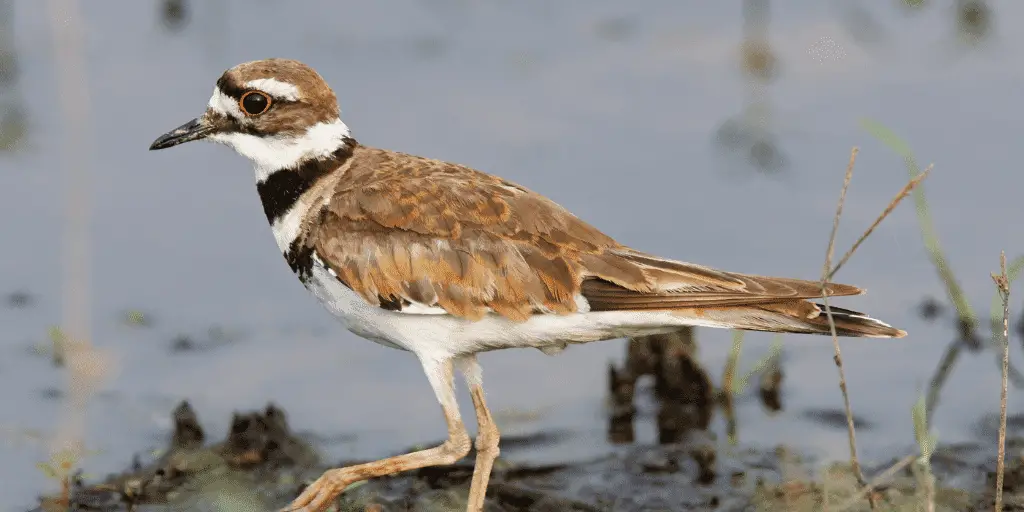
The Killdeer is a fascinating bird that’s part of the plover family, easily recognized by its piercing “kill-deer” call that can be heard echoing through the night. These birds are incredibly adaptable, making homes in a wide range of environments, from the traditional open fields and wetlands to more urban settings like golf courses and parking lots.
One of their most intriguing behaviors is the dramatic act they put on to protect their young. When a predator lurks too close to their nest, which is little more than a scrape on the ground, Killdeer are known to feign injury, luring the threat away from their well-camouflaged eggs with a convincing display of vulnerability.
As night falls, the Killdeer’s activity doesn’t wane; instead, they take advantage of the moonlit landscape to forage. Their diet consists of insects, worms, and other small invertebrates, which they spot and snatch up under the soft glow of the moon.
However, the Killdeer’s adaptability to various habitats doesn’t shield them from the challenges of habitat encroachment. The loss of natural open spaces can be detrimental to their survival.
To ensure these resourceful foragers continue to thrive, it’s crucial to support local conservation efforts. By maintaining and protecting the diverse habitats the Killdeer depends on, we can help preserve the ecological tapestry of our environment. Participation in such initiatives not only benefits the Killdeer but also enriches our own natural heritage.
5. Mockingbirds: Nighttime Serenaders
The Northern Mockingbird is a virtuoso among birds, celebrated for its impressive vocal range and its ability to mimic the songs of other birds. This gray-feathered performer is a familiar presence in urban and suburban landscapes across North America.
Its melodic voice is not limited to daylight hours; the mockingbird is known to sing tirelessly into the night. The reasons behind these nocturnal concerts are fascinating – they’re primarily a means of staking out territory and attracting a mate.
Mockingbirds have a varied diet that includes insects and berries, and they often benefit from the bounty provided by urban gardens. These green spaces are vital for the birds, offering both food and a haven in the concrete jungle. As cities continue to grow, the importance of preserving and creating green spaces becomes ever more critical for the survival of species like the mockingbird.
By planting native plants and reducing pesticide use, residents can make a significant contribution to urban biodiversity. Such actions not only support the mockingbird’s habitat needs but also enhance the ecological health of urban areas.
Encouraging a diverse array of plant life not only provides sustenance for the mockingbirds but also beautifies the neighborhood, creating a win-win situation for people and wildlife alike.
6. Petrels: Oceanic Night Wanderers
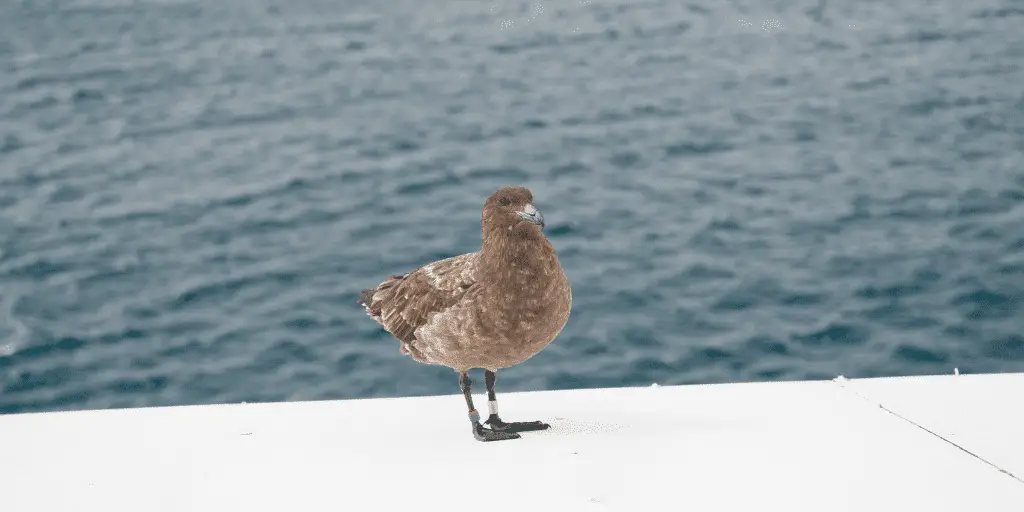
Petrels are the enigmatic seabirds of the open ocean, navigating vast distances under the cover of night. These birds are marvels of evolution, perfectly adapted to a life spent mostly in darkness.
Their exceptional sense of smell is a beacon, guiding them to food sources across the seemingly endless waters. It’s fascinating to think about how these birds can detect the faintest odors of squid or fish oils on the wind, sometimes from miles away.
The low-light vision of petrels is another adaptation that sets them apart. Their eyes are fine-tuned to the subtleties of the night sky, allowing them to see in conditions where most would be blind. This ability is crucial not only for finding food but also for navigating the vast oceanic expanses during their nocturnal flights.
There are various species of petrels, each with its own unique characteristics and breeding habits. Many of them travel to remote islands to breed, seeking out the isolation these places offer to lay their eggs and raise their young away from predators.
However, these breeding grounds are not without their challenges. Climate change and ocean pollution are significant threats, disrupting food sources and nesting sites.
The importance of international cooperation in conserving the marine habitats these birds rely on cannot be overstated. As vast as the oceans are, they are not limitless, and the actions taken on one shore can have ripple effects across the globe. Supporting marine conservation organizations is a tangible way to contribute to the protection of the oceans that are home to these incredible night wanderers.
7. Tawny Frogmouth: The Camouflaged Hunter
The Tawny Frogmouth, native to Australia, is a master of disguise, blending seamlessly into its surroundings. When you picture a nocturnal hunter, you might think of sharp talons and glowing eyes, but the Tawny Frogmouth takes a different approach.
Its mottled feathers mimic the bark of trees, making it nearly invisible to both prey and predators.
At night, this bird comes alive, employing its nocturnal hunting strategies to catch a diet of insects and small animals. It sits perfectly still, waiting for an unsuspecting meal to wander too close. Then, with a swift and silent move, it snatches its prey. This method of hunting requires patience and precision, traits that the Tawny Frogmouth has honed to perfection.
However, the Tawny Frogmouth faces threats to its habitat from deforestation and urban expansion. These activities not only reduce the areas where the bird can live and hunt but also disrupt the delicate balance of the ecosystem it relies on. Conservation efforts are crucial in protecting the natural bushland and woodland habitats essential for the survival of the Tawny Frogmouth.
Encouraging readers to support local conservation initiatives can make a real difference. These initiatives help preserve the unique birds and their environments, ensuring that the Tawny Frogmouth continues to thrive as the camouflaged hunter of the Australian night.
8. American Woodcock: The Twilight Dancer

The American Woodcock, often referred to as the timberdoodle, is a spectacle to behold at dusk in young forests and field edges. As the sun sets, these birds engage in what is known as the “sky dance,” a courtship display that captivates onlookers.
The male woodcock takes to the sky with a series of aerial maneuvers accompanied by distinctive, musical twittering sounds created by its wings. This dance is not just for show; it’s a critical part of their breeding ritual, ensuring the continuation of their species.
Diet and Habitat
American Woodcocks have a particular taste for earthworms, which they hunt using their long, sensitive bills to probe soft ground. Their diet also includes other invertebrates, providing essential nutrients for their survival.
These birds rely on early successional habitats—areas where the forest has been cleared or disturbed, allowing young plants to grow. Such environments are crucial for feeding and breeding, offering both food and cover from predators.
Conservation Challenges
Despite their enchanting performances, American Woodcocks face significant challenges. Habitat loss due to development and changes in land use has led to a decline in suitable environments for these birds. The creation and maintenance of early successional habitats are vital for their survival, necessitating active land management.
The Role of Conservation Programs
Conservation programs play a pivotal role in the American Woodcock’s future. By creating and maintaining the habitats woodcocks need, these initiatives help to counteract the effects of habitat loss. Participation in habitat restoration projects and support for wildlife-friendly policies are ways individuals can contribute to the conservation of this unique species.
9. Nightingale: The Melodic Nocturne
The Nightingale’s song is a defining sound of the night during breeding season. This small, unassuming bird is capable of producing a complex and powerful melody that has inspired poets and musicians for centuries. The Nightingale’s song serves as a beacon in the darkness, marking the presence of this elusive bird.
Habitat Preferences and Migratory Patterns
Nightingales favor dense, scrubby habitats where they can nest and forage. They are migratory birds, spending their winters in sub-Saharan Africa and returning to Europe and parts of Asia for the breeding season. Their choice of habitat is closely linked to their survival and breeding success.
Cultural Significance
The Nightingale’s song has a profound cultural significance, symbolizing love, melancholy, and the arrival of spring. Its enchanting calls have been celebrated in literature and music, capturing the hearts of many.
Threats and Conservation Efforts
Urbanization and agricultural intensification pose significant threats to the Nightingale’s preferred habitats. The loss of dense, thorny undergrowth where they thrive has led to a decline in their numbers. Conservation efforts are focused on protecting and restoring these habitats to ensure that the Nightingale’s song continues to fill the night air.
Bird conservation organizations are at the forefront of this battle, and citizen science projects play a crucial role in monitoring Nightingale populations. Supporting these efforts is essential for the preservation of this iconic nocturnal songster.
10. Barn Owl: The Silent Guardian
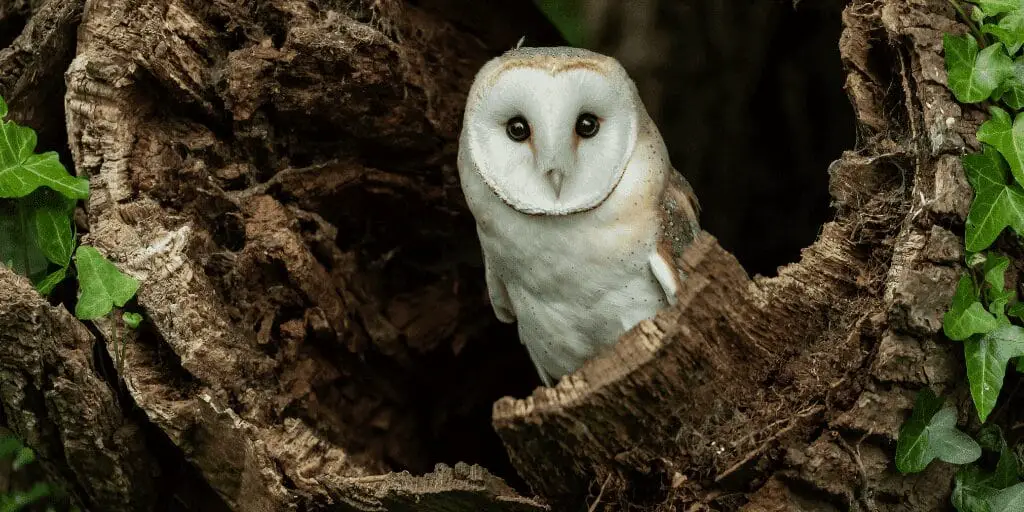
Imagine a ghostly figure gliding through the night sky, its heart-shaped face directing its gaze towards the ground below. This is the Barn Owl, a nocturnal marvel that has perfected the art of silent flight.
Farmers often welcome these owls as allies in the battle against rodents, which form the bulk of the Barn Owl’s diet. A single Barn Owl family can consume thousands of pests such as mice and voles each year, providing a natural form of pest control that’s both effective and environmentally friendly.
However, the Barn Owl faces significant challenges. Modern farming practices can reduce the availability of prey and safe roosting sites. Pesticides, too, can take a toll, poisoning the owls indirectly through their prey. The loss of old barns and hollow trees further exacerbates the problem, leaving these owls with fewer places to nest and raise their young.
Conservation measures like installing barn owl boxes have become a beacon of hope for these birds. These boxes offer a safe haven for owls to roost and reproduce, and their success has been a testament to the power of human intervention in wildlife conservation.
Community involvement is crucial, as creating owl-friendly environments requires a collective effort. By supporting conservation efforts and installing owl boxes, communities play a pivotal role in preserving the Barn Owl, ensuring that this silent guardian continues to grace the night skies.
11. Alder Flycatcher: The Migratory Nocturnalist
As the sun sets, the Alder Flycatcher prepares for another leg of its epic journey. This small, unassuming bird is a nocturnal migrant, navigating the night skies with precision and purpose.
The Alder Flycatcher favors brushy areas near water, where it can find plenty of insects to fuel its long-distance flights. But this journey is fraught with challenges, from disorienting city lights to unpredictable weather patterns.
Conservation of stopover sites is critical for the survival of migratory birds like the Alder Flycatcher. These rest stops provide essential refueling opportunities, where birds can rest and eat before continuing their journey. Loss of these habitats due to development or environmental changes can have dire consequences for migratory populations.
Researchers are working tirelessly to map the migratory routes of these nocturnal travelers, using technologies like satellite tracking and banding to gain insights into their habits and needs. International conservation partnerships are also key, as the protection of migratory birds is a cross-border concern.
By supporting habitat conservation efforts, whether through donations, volunteering, or advocacy, everyone can contribute to the safeguarding of these migratory corridors, ensuring that the Alder Flycatcher and other nocturnal migrants can continue their awe-inspiring voyages for generations to come.
12. Yellow Warbler: The Vibrant Traveler
The Yellow Warbler, a flash of sunlit gold flitting through the trees, is more than just a pretty face in the bird world. These small, active warblers are a common sight in wetlands and gardens, where their sweet song is a herald of spring and summer.
Breeding and Feeding Habits
Yellow Warblers are industrious little creatures, with breeding habits that are as vibrant as their plumage. They weave their nests in the forks of shrubs or trees, often near water, and their choice of habitat is no accident.
These warblers have a diverse diet that includes insects like caterpillars, midges, and mayflies, which are abundant in wetland ecosystems. The proximity to water also provides a buffet of insect larvae and other small invertebrates, ensuring that their young have plenty of food.
Challenges from Habitat Loss and Climate Change
Despite their adaptability, Yellow Warblers are not immune to the pressures of habitat loss and climate change. As wetlands are drained for development or agriculture, these birds lose crucial breeding and feeding grounds.
Climate change further complicates their existence by altering the timing of insect availability, which can affect breeding success.
Conservation Initiatives
Maintaining healthy wetland ecosystems is vital for the survival of the Yellow Warbler. Native vegetation plays a crucial role in supporting their diet and providing nesting materials. Conservation initiatives that focus on protecting and restoring wetland habitats are essential. By participating in local wetland restoration projects, people can make a tangible difference in the lives of these vibrant travelers.
13. Kakapo: The Night Parrot
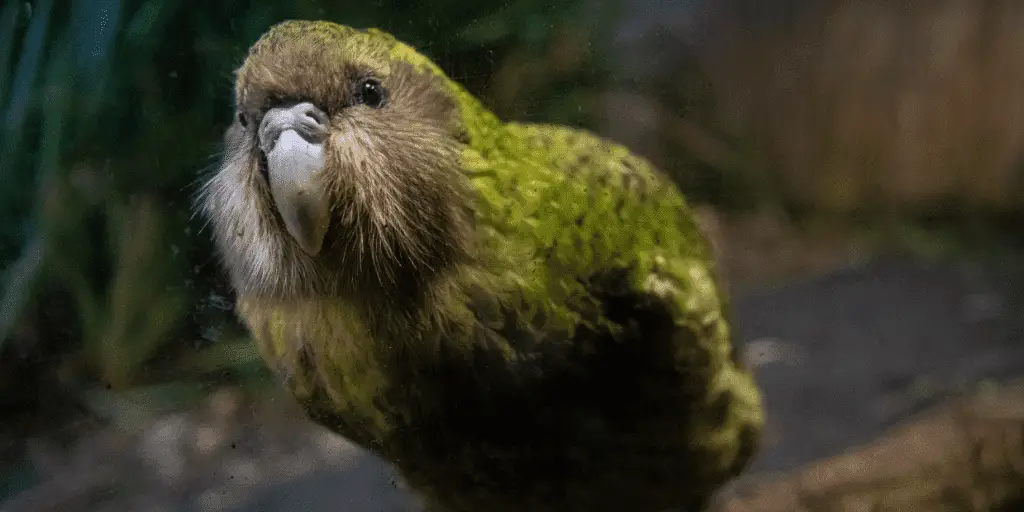
The Kakapo, with its soft, moss-green feathers, might seem like a creature from a fairy tale, but this flightless nocturnal parrot is facing a very real battle for survival. Native to New Zealand, the Kakapo is one of the world’s most endangered birds, with a population that is precariously small.
Unique Lifestyle
Kakapos are the world’s only flightless parrots and the heaviest parrots alive. Their unique lifestyle includes a nocturnal, ground-dwelling existence on the forest floor of New Zealand’s islands. They are solitary creatures, coming together only to breed. Their diet consists mainly of native plants, seeds, fruits, and pollen.
Breeding Program and Conservation Challenges
Efforts to save the Kakapo from extinction are centered around an intensive breeding program, which includes hand-rearing chicks and using supplementary feeding for adults. However, the conservation of this species is fraught with challenges, such as habitat loss and predation by introduced species like cats and stoats.
Innovative Conservation Strategies
Conservationists have employed innovative strategies to protect the Kakapo, including relocating them to predator-free islands and managing their genetic diversity through a carefully monitored breeding program. These efforts are crucial for the survival of the species and require global awareness and support.
The plight of the Kakapo is a poignant reminder of the fragility of our natural world. By supporting conservation efforts, we can help ensure that the enchanting call of the Kakapo continues to echo through the night.
14. Corncrake: The Hidden Vocalist
The Corncrake, with its distinctive and far-reaching call, is a master of hide and seek in the tall grasses of meadows and traditional hayfields. Preferring these dense habitats for nesting and foraging, the Corncrake is a ground-nesting bird that relies heavily on the undisturbed cover of vegetation.
Unfortunately, the modernization of agriculture has not been kind to these birds. The shift towards intensive farming practices, with earlier and more frequent mowing, has led to a dramatic decline in their numbers. The loss of meadows, converted to more profitable crops or urban development, has further squeezed the Corncrake out of its natural home.
Conservationists are ringing the alarm bells and have initiated habitat management and restoration projects aimed at reversing the Corncrake’s decline.
By working with farmers to delay mowing dates and by promoting the use of traditional hay-making practices, these efforts create a safer breeding environment for the Corncrake. Additionally, the establishment of protected areas where the natural grassland ecosystem is maintained or restored provides crucial sanctuaries for these birds.
Supporting agricultural practices that consider the needs of ground-nesting birds is vital. Encouraging the use of wildlife-friendly farming can make a significant difference in the Corncrake’s survival. By fostering an understanding of the Corncrake’s role in the ecosystem and the challenges it faces, there is hope that this hidden vocalist will continue to fill the night with its unique song.
15. Little Penguin: The Nocturnal Swimmer
The Little Penguin, also affectionately known as the fairy penguin, has adapted to an enchanting nocturnal lifestyle. By day, these tiny avian mariners dive into the ocean’s depths, chasing after schools of fish and squid.
As dusk falls, they waddle ashore to the safety of their coastal burrows, often in tight-knit colonies. The life cycle of these penguins is a delicate dance with the sea, with each phase from molting to breeding intricately tied to the ocean’s bounty.
However, life for the Little Penguin is not without its challenges. Predators such as foxes and feral cats pose a significant threat, especially to the vulnerable chicks and juveniles.
Human disturbance, including coastal development and pollution, further exacerbates the risks. To safeguard these charismatic creatures, conservation measures have been put in place. These include predator control programs, habitat protection, and the establishment of marine reserves that ensure the availability of food sources.
Community involvement is crucial in protecting Little Penguin colonies. Local groups often participate in monitoring and protecting nesting sites, and there’s a growing trend of ecotourism that raises awareness and funds for penguin conservation.
By visiting penguin habitats responsibly and supporting conservation-minded tour operators, people can contribute to the survival of these nocturnal swimmers. The Little Penguin’s continued presence along the coast is a testament to the effectiveness of concerted conservation efforts and the power of community action.


